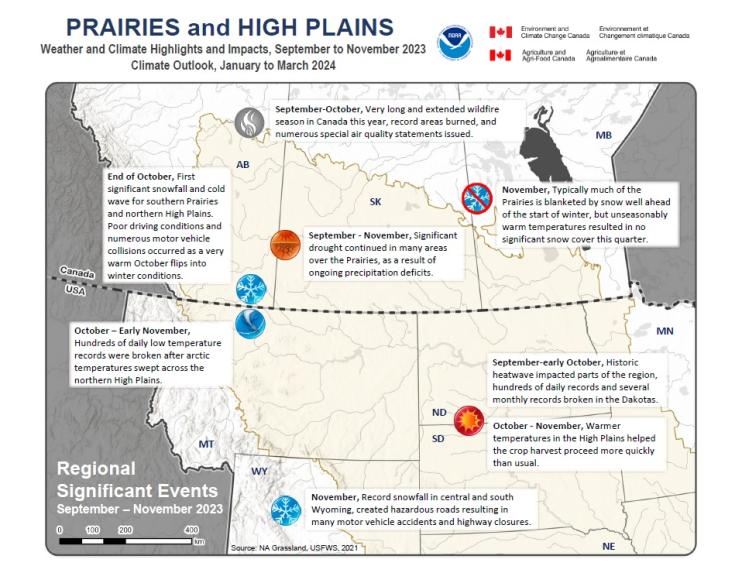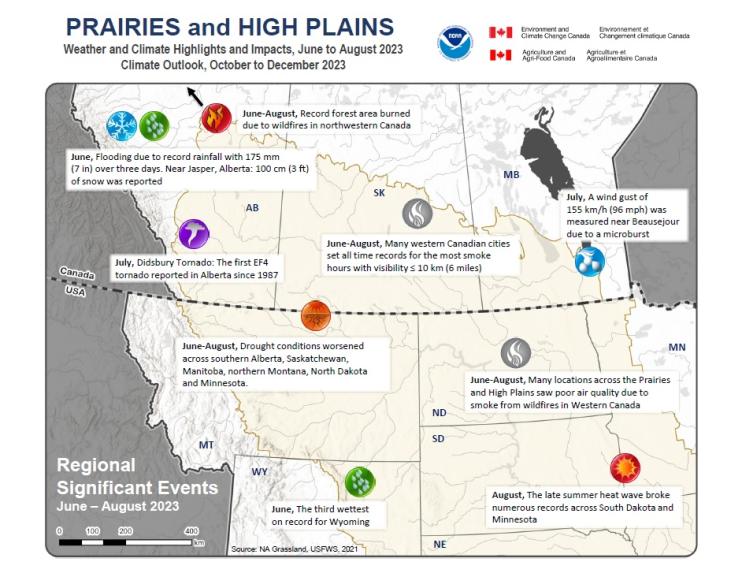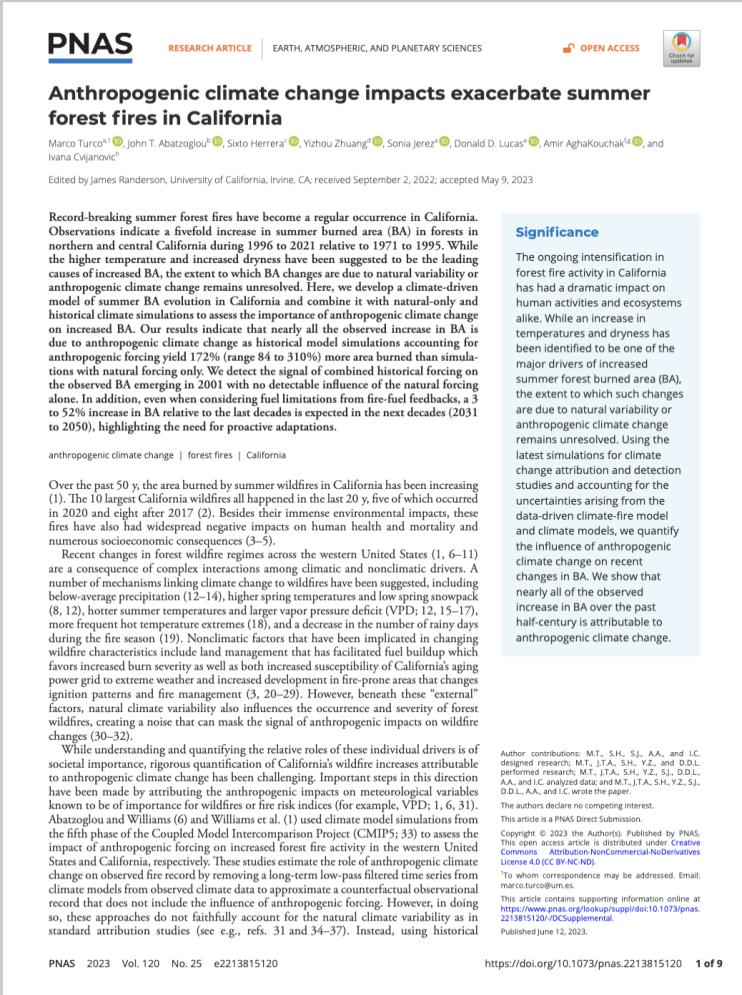Quarterly Climate Impacts and Outlook for the Canadian and U.S. Prairies and High Plains for September–November 2023, with an outlook for January–March 2024. Dated December 2023.
The Prairies and High Plains generally experienced warmer fall conditions, except the area that borders Montana and the Dakotas. Precipitation was well below normal for much of the Prairies, with parts of central Alberta receiving less than 30% of its seasonal amount.
This handout provides information on the typical EL Niño winter pattern; the El Niño outlook; potential winter and spring impacts; and comparisons of conditions during previous El Niño years for the Missouri River Basin region. Updated November 2023.
NOAA’s Regional Climate Services Program created these outlooks to inform the public about climate impacts within their respective regions. Each regional report contains easy-to-understand language, and anyone can access them through the U.S. Drought Portal.
Quarterly Climate Impacts and Outlook for the Canadian and U.S. Prairies and High Plains for June–August 2023, with an outlook for October–December 2023. Dated September 2023.
While much of the Prairies and High Plains saw warmer-than-normal conditions, the southwestern region remained cooler than normal. Much drier-than-normal conditions were observed across regions along the international border, with the dry spell extending further inland which impacted regions within Saskatchewan, Manitoba, and Minnesota.
Quarterly Climate Impacts and Outlook for the Western Region for June–August 2023. Dated September 2023.
Temperatures were above normal across the Pacific Northwest and much of the Southwest. New Mexico, Washington, and Oregon had their third, fifth, and seventh warmest summer on record, respectively. Remnants of Hurricane Hilary brought heavy rainfall to southern California and the Great Basin in mid-August and contributed to much-above-normal total summer precipitation across the region.
This article in Earth, Atmospheric, and Planetary Sciences was the result of NIDIS-supported research. Learn more about this research.









